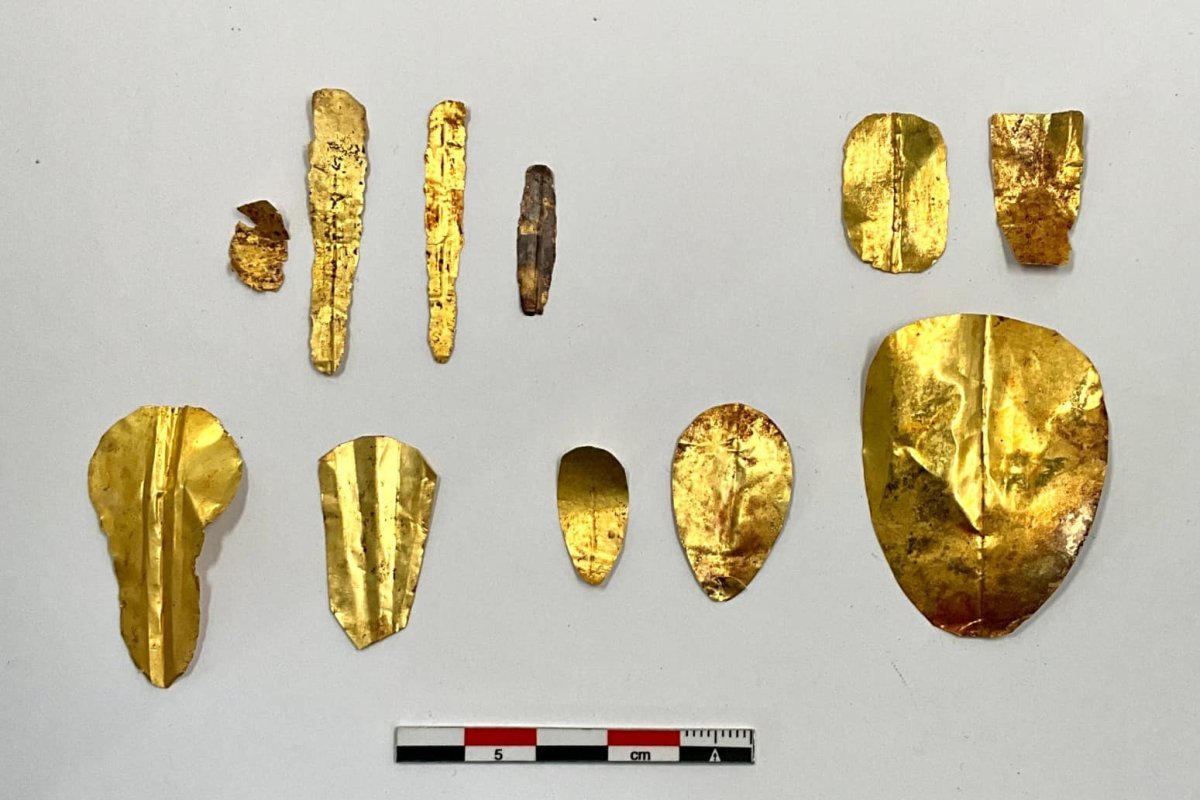Archaeologists have uncovered several ancient Egyptian tombs containing dozens of mummies—some of which were found with gold tongues and nails—among other remarkable artifacts.
A joint Egyptian-Spanish mission made the finds in the archaeological area of Al-Bahnasa in the Minya governorate, which is home to the remains of the ancient city Oxyrhynchus, Egypt's Ministry of Tourism and Antiquities announced in a statement.
Oxyrhynchus was a significant settlement during ancient Egypt's Greco-Roman period, which spanned hundreds of years from the late fourth century B.C. until the seventh century. The tombs that the team identified recently date specifically to the Ptolemaic period.
The Ptolemaic dynasty was a royal family of Macedonian Greek origin that ruled Egypt after Alexander the Great's conquest of the territory. Founded in 305 B.C., the dynasty persisted until Rome defeated and annexed the kingdom in 30 B.C.

Some of the mummies discovered recently in the Ptolemaic-era tombs were found with pieces of gold shaped into the form of a human tongue. Such golden tongues have previously been found at Oxyrhynchus and other archaeological sites in Egypt, although they are relatively rare discoveries.
Experts think the ancient Egyptians may have placed gold tongues on some human remains in the belief that they would enable the spirits of the deceased to communicate with Osiris—the god of the underworld—and to help them cross into the afterlife.
"The Egyptian people deposited the golden tongues on the tongue to restore vital functions to the dead and also so that the body remained intact in the afterlife. For the Egyptians, gold was the flesh of the gods," Esther Pons Mellado and Maite Mascort, co-directors of the Spanish side of the archaeological mission, previously told Newsweek.
في سابقة هي الأولى من نوعها في منطقة البهنسا الأثرية بمحافظة المنيا- الكشف عن مجموعة من الألسنة والأظافر الذهبية لمومياوات داخل مقابر من العصر البطلمي - العثور على تمائم وجعارين متنوعة لعلامة الجد...
Gold nails have also been found in Egyptian archaeological contexts, although they are quite rare. The purpose of these artifacts may have also been associated with the Egyptian belief in the protective qualities of gold.
During its excavations, the archaeological mission identified colorful inscriptions and writings in the tombs, as well as texts and ritual scenes of various goddesses that appear for the first time in the Al-Bahnasa area.
Beside the golden tongues and nails, researchers discovered a number of other artifacts—including several amulets and idols of deities such as Horus, Isis and Osiris.
Some of the amulets are shaped like scarab beetles, which were thought to be imbued with magical properties in ancient Egypt. One of the mummies was even found with a heart scarab. This was a scarab-shaped amulet placed where the heart of the deceased once was.
Do you have a tip on a science story that Newsweek should be covering? Do you have a question about archaeology? Let us know via science@newsweek.com.



















:quality(85):upscale()/2024/04/24/878/n/3019466/36c5693c662965c5d1ce91.72473705_.jpg)
 English (US) ·
English (US) ·